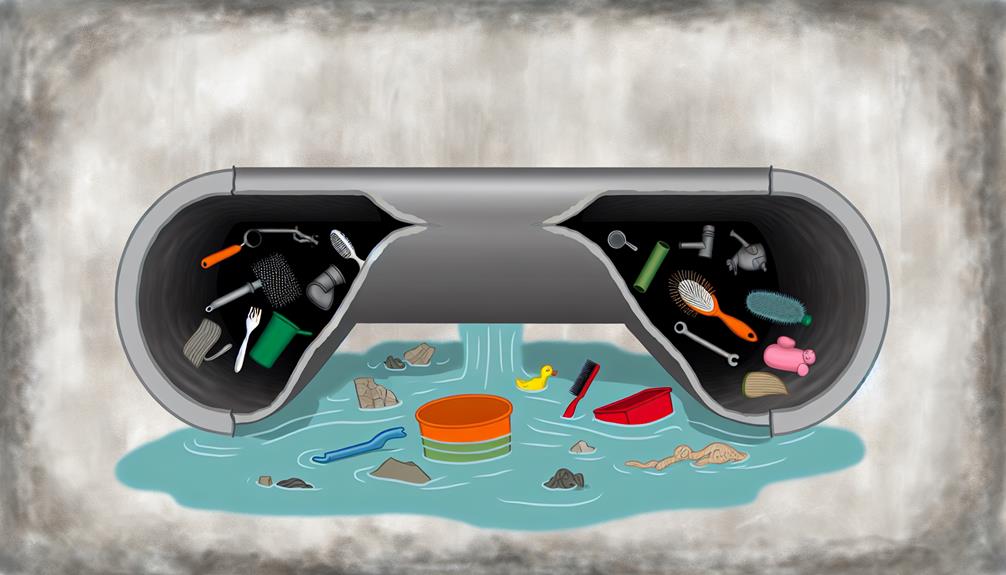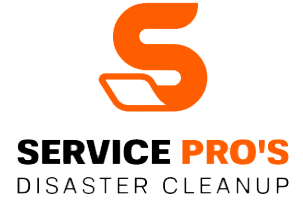FAQ on Cleaning up from Sewage Backup Disasters
We’ve all experienced it, we’ve all dreaded it, and we’ve all wondered how to avoid it – the chaos and confusion of a sewer backup. As unpleasant as it may be, understanding the causes, consequences, and cleanup strategies for sewer backups is crucial for every homeowner.
We’re going to unpack this topic, delving into everything from common causes to effective cleanup strategies. And while sewer backups may be a dirty topic, there’s no denying its importance.
So, stick around, because we’re about to reveal some valuable insights that could save you considerable time, money, and hassle in the future.
Understanding Sewer Backups: Basics
 Let’s dive into the basics of sewer backups, a crucial aspect of plumbing that every homeowner should understand. It’s a messy, smelly problem that we’d all prefer to avoid. At its core, a sewer backup is when wastewater can’t properly drain from your home into the sewer system. This leads to the wastewater reversing course and flowing back into your home. We’re talking toilets, sinks, and drains. Not a pleasant picture, is it?
Let’s dive into the basics of sewer backups, a crucial aspect of plumbing that every homeowner should understand. It’s a messy, smelly problem that we’d all prefer to avoid. At its core, a sewer backup is when wastewater can’t properly drain from your home into the sewer system. This leads to the wastewater reversing course and flowing back into your home. We’re talking toilets, sinks, and drains. Not a pleasant picture, is it?
There are several causes for sewer backups. The most common one we encounter is a clog in the main sewer line. Anything from grease, hair, paper products, or even tree roots can cause this. We’ve also seen structural damage to the lines, like cracks or collapses, which can happen over time or due to shifts in the ground. Surprisingly, heavy rainfall can also cause problems. If the city sewer system can’t handle the excess water, it could back up into your home.
The consequences of a sewer backup are serious. It’s not only gross but also dangerous. The wastewater can contain bacteria and viruses that pose a health risk. It can also lead to significant property damage, especially if it’s not addressed quickly.
Cleanup is often a job for professionals. They’ve the equipment and expertise to handle the situation safely and effectively. They can also help identify the root cause, so you can prevent future backups.
Understanding sewer backups is the first step towards preventing them. We’re here to help, so if you’ve got questions, don’t hesitate to ask. We’re all in this together.
Common Causes of Sewer Backups
Now that we’ve grasped the basics of sewer backups, it’s important to examine the common causes that can lead to these unpleasant situations.
One major cause is clogged pipes. Things like grease, hair, food waste, and other debris can build up over time, blocking the flow of waste. So, we must be careful about what we send down our drains.
Tree roots are another major culprit. They can grow into the sewer lines, causing blockages and potential backups. It’s crucial to be aware of the location of sewer lines when planting trees and large shrubs in our yards.
Next, we’ve got structural issues like broken or collapsed lines. These can occur due to old age, soil shifting, or improper installation. Unfortunately, these issues can’t be prevented entirely but regular maintenance can help detect them early.
Sometimes, the issue is a sewer main blockage. If the city’s main sewer line gets blocked, it can cause backups in homes connected to it. We can’t control this, but we can alert the city authorities if we suspect a problem.
Lastly, let’s not forget about heavy rainfall. If the sewer system can’t handle the volume of water, it can cause a backup. While we can’t control the weather, we can ensure our homes have good drainage systems.
Understanding these common causes is the first step in preventing sewer backups. By being proactive and conscious of how we treat our sewer systems, we can save ourselves a lot of trouble down the line.
The Unseen Dangers: Consequences
While it’s important to prevent sewer backups, it’s equally crucial to understand the serious consequences they can have on our health and homes if they do occur. Sewer backups can lead to significant property damage. They can ruin floors, electrical systems, furniture, and other personal belongings. The cost of repairing these damages, not to mention the loss of cherished items, can be quite high.
But it’s not just about the money. The health risks associated with sewer backups are even more alarming. The wastewater that backs up into your home isn’t just dirty water. It’s full of bacteria, viruses, and other pathogens that can cause a variety of diseases. We’re talking about serious illnesses like Hepatitis, Giardia, and other gastrointestinal problems.
It’s also worth mentioning the psychological stress that comes with dealing with a sewer backup. There’s the panic and frustration of seeing your home flooded with sewage, the stress of clean-up, and the anxiety of living with the health risks.
And let’s not forget about the impact on our environment. Sewage that isn’t properly treated can end up in our rivers, lakes, and oceans, causing pollution and harming aquatic life.
In short, the unseen dangers of sewer backups are far-reaching and serious. They can take a toll on our health, our homes, and our environment. That’s why it’s so important to understand what causes these backups and how to prevent them.
Effective Cleanup Strategies
Having grasped the serious consequences of sewer backups, we must equip ourselves with effective cleanup strategies to mitigate damages and health risks.
First, we must act swiftly. Time is of the essence when dealing with sewage backups. The sooner we start the cleanup process, the lower the risk of further damage and health hazards. Make sure to protect yourself by wearing rubber gloves, boots, and eye protection.
Second, it’s essential to remove all wet items from the affected area. Furniture, carpets, toys, and anything that can be moved should be taken out. These items need thorough cleaning or, in some cases, may need to be discarded.
Third, we should promptly dry out the affected area. This can be done using fans, dehumidifiers, or heaters, ensuring that no moisture is left, which could lead to mold growth. Remember, mold can start to grow in as little as 24 hours.
Next, it’s important to clean and disinfect all surfaces touched by the sewage. This includes walls, floors, and any items you’ve managed to salvage. We can use a solution of one part bleach to ten parts water.
Lastly, consider hiring a professional cleanup crew if the damage is extensive. They’re equipped with industrial-grade equipment and have the necessary expertise to ensure the cleanup is done safely and thoroughly.
Preventing Future Sewer Backups
To avoid the stress and damage of future sewer backups, it’s crucial we implement preventative measures that can keep our sewer systems running smoothly. Here’s what we need to do.
Firstly, we must dispose of our waste properly. Flushing inappropriate items such as diapers, baby wipes, cotton balls, or feminine hygiene products can cause blockages in our pipes. They’re not designed to break down like toilet paper and can easily lead to a backup. Even certain types of food waste, like oils or grease, should never go down the drain as they can solidify and block the sewer line.
Secondly, we should regularly inspect and maintain our sewer lines. Tree roots are a common cause of sewer backups, as they can infiltrate the pipes and cause blockages. Regular inspection can help detect any potential root intrusion early, and measures such as root cutting or the use of root-killing chemicals can help keep our lines clear.
Thirdly, installing a backwater prevention valve can be a great investment. This device, installed into the sewer line in the basement, allows sewage to go out, but not to come back in. This can be especially helpful in areas prone to heavy rainfall or flooding.
Frequently Asked Questions
What Are the Potential Health Risks Associated With Sewer Backups?
We’re at risk of numerous health issues from sewer backups. They can expose us to harmful bacteria and viruses, potentially causing diseases like Hepatitis A and E.coli. We’re also at risk of respiratory problems.
What Is the Average Cost to Repair a Sewer Backup?
We’re often asked about the average cost to repair a sewer backup. It’s hard to pinpoint an exact figure, but generally, we’ve seen costs range from $500 to $5000, depending on the severity of the damage.
Can Homeowners Insurance Cover the Cost of a Sewer Backup?
We’ve asked if homeowners insurance covers sewer backup costs. Yes, it can, but typically it’s not included in standard policies. You’d need to add an endorsement or specific coverage for sewer backup damage.
Are There Professional Services That Specialize in Sewer Backup Cleanup?
Yes, there are professional services that specialize in sewer backup cleanup. We’ve used some in the past and they’re experts at dealing with the mess and damage. They’re a great help in such stressful situations.
How Long Does It Typically Take to Fully Recover From a Sewer Backup?
We’re often asked about recovery time from a sewer backup. It’s not a quick fix, we’d say it typically takes about a week, depending on the extent of the damage and the cleanup methods used.


